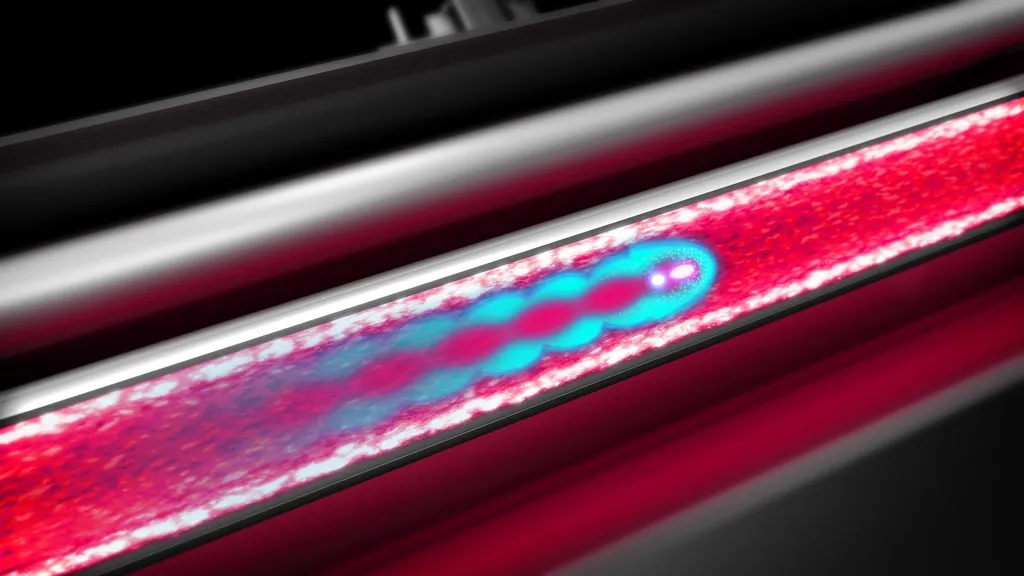In the realm of energy and particle physics, a team of researchers from the SLAC National Accelerator Laboratory has made significant strides in plasma wakefield acceleration, a promising technology for future particle colliders. The researchers, including R. Ariniello, V. Lee, D. Storey, and their colleagues, have demonstrated a substantial transfer of energy from an electron beam to a plasma, bringing us closer to the parameters required for a collider based on this technology.
The study, published in the journal Nature Communications, focuses on the concept of drive beam depletion in plasma wakefield acceleration. This process involves an initial, or “drive,” electron beam transferring its energy to the plasma, creating a “wakefield” that can then accelerate a trailing, or “wake,” beam to high energies. The goal is to achieve a highly efficient energy transfer, with the drive beam surrendering a significant portion of its energy to the plasma.
In their experiment, the researchers used an all-optical plasma source to create a hydrogen plasma with a density of 4.5 x 10^16 cm^-3. They then directed a 10 GeV electron beam with a charge of 1.52 nC into the plasma. The result was a transfer of at least 5.6 Joules of energy from the electron beam to the plasma, with a drive-to-wake energy transfer efficiency of at least 37%. This is a notable improvement over previous experiments and brings us closer to the 70% efficiency target required for a collider.
The researchers also observed that up to 90% of the charge in the electron beam participated in the interaction, with some particles being decelerated to less than 0.93 GeV. This indicates that a significant portion of the beam’s energy was indeed transferred to the plasma.
The practical applications of this research for the energy sector are primarily in the realm of particle physics and high-energy physics research. Plasma wakefield acceleration could potentially lead to more compact and efficient particle colliders, which could be used to probe the fundamental building blocks of the universe. Moreover, the principles underlying this technology could potentially be applied to other areas of energy research, such as the development of more efficient particle accelerators for industrial and medical applications.
In conclusion, this research represents a significant step forward in the development of plasma wakefield acceleration. While there is still work to be done to reach the target parameters for a collider, the progress made by this team of researchers brings us closer to that goal. The potential applications of this technology in the energy sector are promising, and we can expect to see further developments in this area in the coming years.
This article is based on research available at arXiv.

